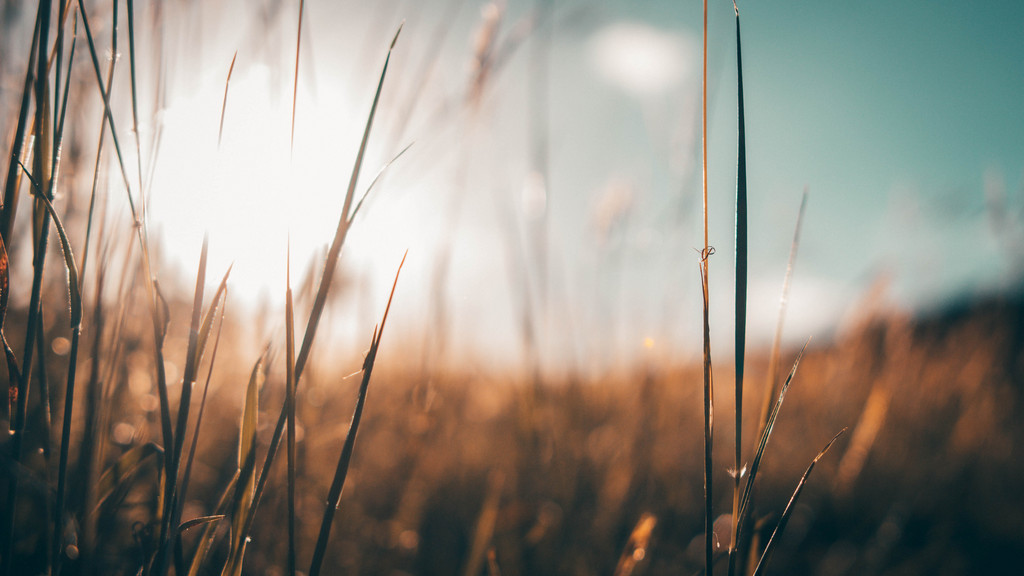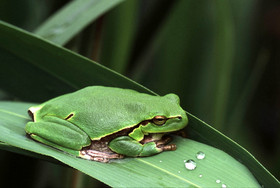

The Hehneswiesen are secured! A big thank you to all who have helped to protect the 12,566 m² of wet meadow in the long term. Now we can close the drainage ditches and thus turn the meadows back into a wetland biotope. Tree frog & Co. have a new and safe habitat.


The Hehneswiesen were originally an area of vast wet meadows in South Hesse, covering around 470,000 square metres. White Storks, Curlews and many other species found their habitat there. Extensive drainage left the meadows dry and the diversity of species disappeared.
Due to interventions by nature conservation groups, part of the Hehneswiesen remain. As a result, the rare flower Large Pink has survived and the endangered Dusky Large Blue (a rare type of butterfly) can be seen from time to time around the Hehneswiesen.
Naturefund was given the unique chance to buy 12,566 square meters and protect an important part of the Hehneswiesen for nature. This area plays a central role, as there are two drains there:
“Now, we can extend the waterlogging of the Hehneswiesen and turn the whole 470,000 square metres back into a wet biotope” explains Katja Wiese, Managing Director of Naturefund. More than half of the meadow is already protected.
Location
South Hesse, close to the town of Groß-Umstadt
Size
12,565 square metres
Wildlife
Tree Frog, Dusky Large Blue butterfly, Lapwing, Yellow Wagtail, Nightingale, Golden Oriole, European Stonechat, Grey Partridge and White Stork.
Migrating birds: Great White Egret, Greenshank, Eurasian Golden Plover, Northern Shoveler, Hen Harrier, Eurasian Hobby and numerous other species.
Following a 40-year absence, White Storks began breeding here again in 2002. Since then, they have successfully reared 22 young.
Flora
Large Pink, Water Avens, Meadow SaxifSpecial characteristics
The Hehneswiesen are located close to the town of Groß-Umstadt and cover an area of around 47 hectares. In the past, the Hehneswiesen were a unique wetland area boasting a great variety of species. During the last century the land was increasingly drained and used intensively as pasture or farmland. As a result the meadow dried up and the unique variety of species disappeared.
The 12,565 square metres that we bought used to be privately owned and had been used intensively. The area lies at a point where two drainage ditches meet. With the purchase comes the unique chance to block the drainage system and turn a large section of the Hehneswiesen back into its natural state.
History
The Hehneswiesen were originally a wet meadow, covering more than 40 hectares. Unfortunately over the last 30 years an extensive drainage system had been implemented. It was the dedication of nature conservation organizations that first lead to a rethink. In recent years, sections of the land have been purchased and farmland has been turned back into meadow land.
The remainder of a rare plant species was saved and Large Pink began to grow here for the first time in decades. Tree frogs, Green frogs, various dragonfly species, the Dusky Large Blue butterfly and the Swallow-tail butterfly can now be found in the area.
Due to the presence of these endangered species and this habitat, the Hehneswiesen have been accepted into the European Union NATURA-2000 Network as part of the Unteren Gersprenz River area.
Partner
The owner of the land is now the Dieburg branch of NABU. Together with nature conservation authorities, it will block drainage ditches and manage the land in the long-term.
Concept for protection
Drainage ditches will be filled in and the meadow managed in the long-term. In the future, wet and fresh meadows together with grazing cattle, existing reed ditches, wet areas and hedges, should create a natural paradise.
Start: February 2011
End: September 2011
Southern Hesse
12.565 m²
Owner of the meadows became the NABU Dieburg. Together with the nature conservation authority, he has dismantled the drainage ditches and will be responsible for the long-term maintenance of the area.
Since 2011
Supports 1 project
Since 2011
Supports 1 project